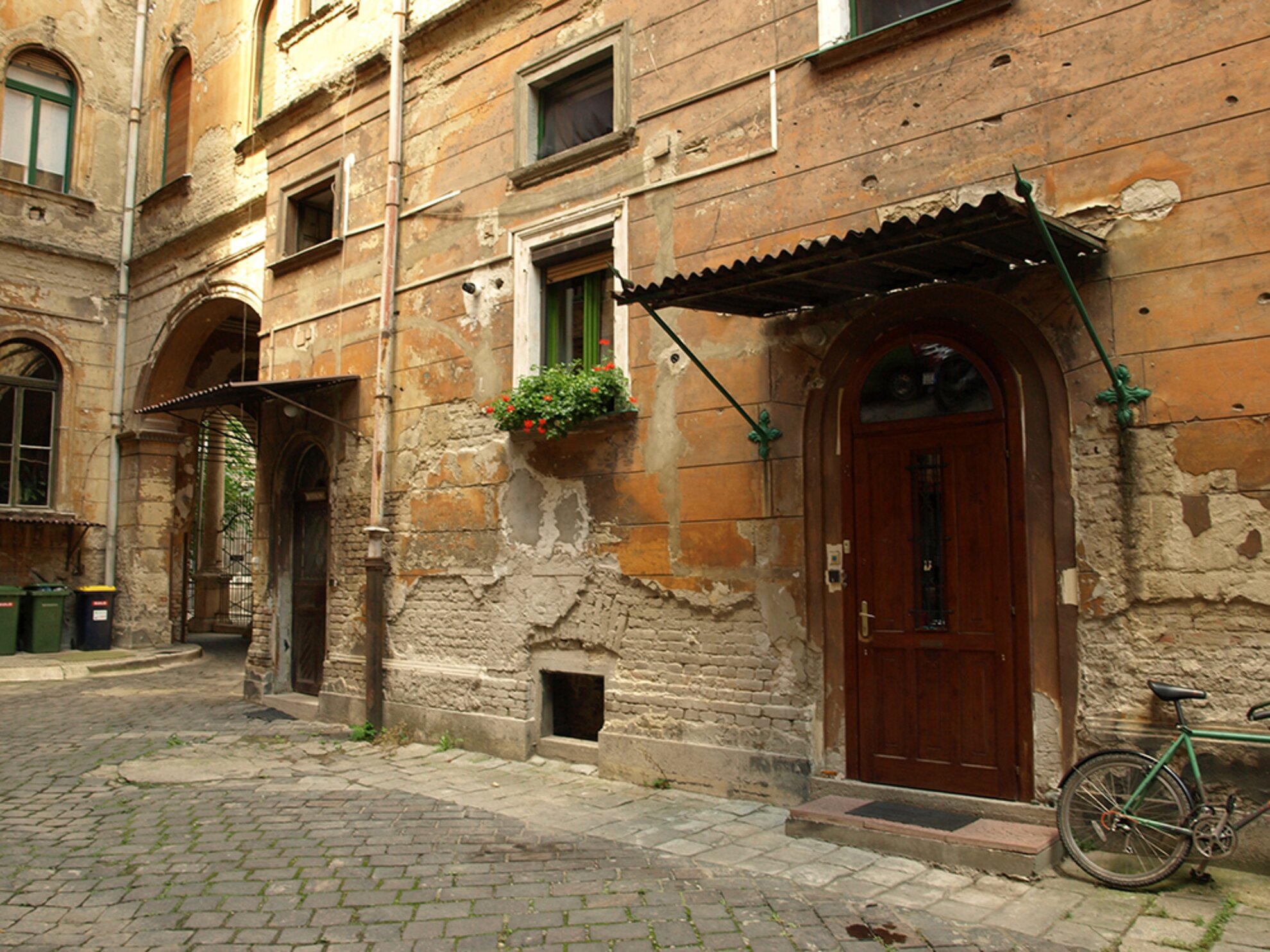
There are multiple three-hour walks through Budapest’s District VIII offered by Beyond Budapest, also in English upon request. On this one, we cover two parts of the neighbourhood in stark contrast to each other, yet both fundamentally define this slice of the city. On the first half, we navigate through Palotanegyed – the luxurious and stately Palace Quarter – and then continue to the second half, in the old centre of Józsefváros, poorer and shabbier, but no less colourful.
The tour begins in the gardens of the Hungarian National Museum. This is not by accident – the museum, in its Classicist style, was rebuilt in 1847, marking the real beginning of the district’s development. It was back in 1802 that the father of the great innovator István Széchenyi, Ferenc Széchényi, received permission from Emperor Francis I to establish the museum, and the Parliament of 1832-47 offered the necessary funds to build it. More and more palaces began springing up after this, including the grandiose living spaces of the Festetics, Zichy, Esterházy, Károlyi and Törley dynasties. Perhaps most famous of all is the building of today’s Szabó Ervin Library, originally owned by the Wenckheim family. Aristocrats, nobles and wealthy citizens populated this affluent area, while some of the palaces were also rented out as apartments.

Each tour is filled with stories, anecdotes and even a good rumour or two, revealing hidden secrets about places we walk past on a daily basis without knowing their past. Often it feels as though we’ve flown back in time, imagining that a fancy carriage will turn the corner any minute, on the way to a ball at the Festetics Palace.

It will surprise some visitors to learn that the name 'Palace Quarter' was only given to the area in the 1990s after the change of régime. Before then, it was called Mágnásfertály, 'Magnates' Patch', which has the same overall meaning but far less poetic. The term 'Palace Quarter' was invented by savvy real estate agents and property developers to entice wealthy prospective tenants.
Leaving the Palace Quarter and entering another part of District VIII is a real culture shock. Away from the grand boulevards and stately columns, the buildings here often sport peeling paint, holes in the façades and residents lounging on the doorstep, watching the world go by. One woman, weighed down by plastic shopping bags, nods to our tour guide and says with a sardonic smile, “You brought yourself into the jungle, huh?”
Which, of course, is an exaggeration, as District VIII hasn’t been a jungle for some time, thanks to the slow effects of gentrification. The buildings here certainly aren’t palaces, though – rather, rows of apartments in a myriad of styles, feeling much like the outskirts or almost a rural village. Some places are uninhabited, others are waiting for demolition and several hold out hope for renovation. In this area, you can still see the ravages of World War II and even the ’56 Revolution, so it’s hoped that renovation will be chosen over demolition, to keep history in the present.

Our tour comes to an end next to Teleki tér, at Népszínház utca. Here, we learn that more Jewish families lived in and around Teleki than in the official Jewish Quarter of District VII. In fact, more than 80 synagogues and houses of worship once existed here. Today, however, there is hardly a trace of anything left. Many residents are Roma, the snatches of Gypsy rhythms here and there echoing the generations of musicians who have been raised here.




